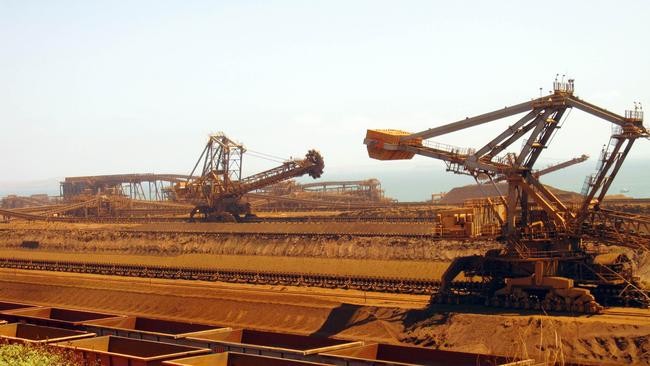Rio launches pilot plant to trial technology to cut coking coal from steel industry
Rio Tinto says it has launched pilot trials of a processing technology that uses agricultural waste to cut coking coal out of the steel making process.

Rio Tinto says it has launched pilot trials of a processing technology that uses agricultural waste to cut coking coal out of the steelmaking process, as the Pilbara’s iron ore majors look for ways to help their customers decarbonise the steel industry.
Rio says it has spent the past 10 years working on the technology, which was conceived within its WA iron ore operations, and a pilot plant for the process is already in operation in a German research facility.
The process involves mixing its Pilbara iron ore fines with “lignocellulosic biomass” – found in fibrous agricultural by-products such as straw and sugarcane bagasse – and bombarding the mixture with microwaves that eventually turn iron ore into high-purity metallic iron.
If the process works on a larger scale, Rio says it could eventually help replace massive blast furnaces that use coking coal to achieve the same effect – drastically reducing carbon emissions from the steelmaking process.
The technology is one of a number being trialled to cut the use of coal in the steel industry, which is considered one of the hardest to decarbonise.
Fortescue Metals Group is also running pilot trials of its own “green iron” technology, and other iron ore producers have been pumping money into ways to help decarbonise their customer’s operations.
While Rio was at pains to note its process was in the earliest stages of commercial development, iron ore boss Simon Trott said the results so far were encouraging and suggested it could eventually provide a cost-effective way to produce low-carbon steel from Rio’s Pilbara iron ore.
“More than 70 per cent of Rio Tinto’s Scope 3 emissions are generated as customers process our iron ore into steel, which is critical for urbanisation and infrastructure development as the world’s economies decarbonise,” he said. “So, while it’s still early days and there is a lot more research and other work to do, we are keen to explore further development of this technology.”
But Rio has a long way to go to demonstrate the technology can be deployed at the massive scale needed to replace blast furnaces at steel mills, which currently make up more than 70 per cent of the industry in China, the world’s biggest steel producer.
It is understood that a tonne of biomass is needed for each tonne of iron ore fed into the system – and its mines last year produced about 229 million tonnes of iron ore fines.
Rio has spent about 30 years and more than $1bn on the development of its HIsmelt processing technology, before mothballing the operating plant it built at Kwinana in WA in 2008.
In 2014 Rio tore down the remains of its Kwinana plant and shipped the bulk of it to China.


To join the conversation, please log in. Don't have an account? Register
Join the conversation, you are commenting as Logout